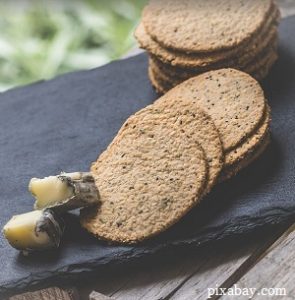The Civil War was brutal. That’s all there is to it. If you’ve seen The Free State of Jones, even the first fifteen minutes of the movie bring home some of the atrocities that men – on both sides – had to endure.
While it’s true that the Union soldiers were generally better fed than the Confederate soldiers were, Neither side was eating steak and eggs, at least not with any kind of regularity. Because an army really does march on its stomach, food supplies going both directions were interrupted as often as possible.
Unfortunately, that often meant burning fields and slaughtering animals, leaving them to rot, as a regiment passed through an area, in order to keep the other side from eating. The casualties of those actions weren’t just soldiers – the families who depended upon those animals and crops to exist also starved.
How did they manage to survive? Keep reading to find out!
Because food conditions became so brutal, especially in the South, both soldiers and families had to learn how to survive with very little food. I don’t think I know a single person who hasn’t seen Gone with the Wind, and though it’s not one of my favorite movies, it does point out some valid points.
The land was destroyed and plundered. A woman who had been raised “gently” aka- spoiled, and had no skill or knowledge whatsoever, learned what she needed to in order to survive. Scarlet isn’t necessarily the greatest example of how things went down simply because she was entitled and duplicitous, but the movie did have a realistic element to it.
So what was a man to do if he was on the march and had very little time to cook, and very few ingredients to do it with? And what about the women and infirm left at home?
How did they live? The answer is: simply and with what little they had on hand.
The one advantage that both sides had was that the country was still agricultural. People, at least in the part of the country where they were fighting, weren’t dependent upon outside sources for survival. Family or estate gardens were the norm rather than the exception and fruit trees and wild berries grew in abundance.
This allowed the soldiers to grab food from along the trail and it allowed families who may have lost most of everything else to have at least enough to survive. Remember, too, that canning was a huge part of life back then, so if families managed to hide their food or were fortunate enough to remain off the marching trails, they had food stockpiled.
The marching soldiers weren’t quite so lucky, and it wasn’t always because food was scarce. There was also the fact that most of the men had no idea how to cook; they’d never had reason to learn because they had women or servants to do that.
The North had an advantage here at the start of the war because they had the United States Sanitary Commission watching out for them. They were a system of volunteers that were trained to find and distribute food to soldiers in the field.
They knew about what was in season where, and how to preserve it and transport it. It was their sole job to keep the soldiers constantly fed. That doesn’t mean the food tasted good, though, and they didn’t always come through so the soldiers were left to their own devices.
It was so bad that a hotel owner named Sanderson proposed that they actually teach two people per 100 to cook so that somebody had at least rudimentary skills. He also wrote a cookbook that offered suggestions on cooking methods and some simple recipes.
On the other hand, the Confederacy was a ragtag team who came together as farmers, miners, plantation owners, and other working men who were fighting for what they believed in. They weren’t soldiers and didn’t have any sort of organized system in place. They ate on the run and were dependent on what they could catch, hunt, pick, or pilfer. Families along the way were often sympathetic to the cause and would offer what they could.
Either way, if you have an entire army of people who are great at shooting a rabbit but have no idea how to cook it, you can imagine that foodborne illness was a serious issue.
The typical daily allotment for a confederate soldier was twelve ounces of back and a pound of cornmeal (also called Indian meal) or hardtack. In the beginning, sugar, beans and coffee were part of the allotment, but faded out as food supplies dwindled.
Union soldiers received salted pork or beef, coffee, sugar, vinegar, salt, and dried fruits and veggies when they were in season. There were also civilian merchants called sutlers that set up shop in camps and sold canned fruit, sugar, tobacco, and coffee.
Hardtack was a staple on both sides and often was the only thing that stood between a man and starvation, though it hardly qualified as food and had practically no nutritional value other than carbohydrates because it was flour and water. Both sides also carried a canvas bag with buckles called a haversack that held their food and anything else they needed to survive for a few days on their own.
Finally, Confederate soldiers would often trade tobacco to Union soldiers for coffee beans, though it was done in secret because, obviously, fraternization was frowned upon.
I think it’s critical to remember here that these were brothers fighting brothers. Unlike other wars, these men were still countrymen, though their convictions had brought them to war. Sometimes, men managed to find uneasy peace long enough to help each other.
By the end of the war, things were so bad that there were food riots in many southern cities because food lines had been severed, personal food sources had been pillaged and/or destroyed, and people were starving. Even rats were fair game.
Here are a few recipes that soldiers used, and note that there are often no amounts listed but it was just a “make-do” type of cooking:
Top 9 Civil War Survival Recipes
Battlefield Cornbread

Mix cornmeal with enough pork fat to make a stiff batter. Spin your bayonet in it until coated, then hold over the fire to cook the bread.
Indian Sagamite
This was simple – three parts corn meal and one part brown sugar, browned in a skillet. In small amounts, it allays hunger and thirst, making it a good food for scouts.
Coffee Substitute
Wash ripe acorns in the shell dry them, and parch them until the open. Take the shell off and roast the nuts with a little bacon fat and you’ll have a “splendid cup of coffee.”
Chicory was also used, and chicory coffee remains a southern thing.
Plain Irish Stew (Feeds 50)
Cut fifty pounds of mutton into ¼-pound chunks. Put them in a pot and add twelve pounds of whole potatoes along with 8 tablespoons of salt and three teaspoons pepper. Cover with water, about a half-pint to each pound of meat. Light the fire and simmer (well, it says 1-1 ½ hours of gentle ebulation).
Hard Tack
Dissolve 1 ½ tbsp. salt in 1 cup water. Mix into 5 cups flour. Knead into a dough and roll out to 1/3-inch thickness. Cut into 3-inch squares and pierce each with a fork or whatever is available.
Cook on low temperature of 250 degrees to prevent burning for at least 4 hours, turning over halfway through.
Johnnycakes
- 2 cups boiling water
- 1 teaspoon salt
- 1 tablespoon sugar
- 1 tablespoon butter
- 1 cup cornmeal
- 1 tablespoon bacon fat
Bring the water to a boil and slowly add the cornmeal. Cook for 5 minutes then add the remaining ingredients. Place a 3-oz. scoop into a hot greased skillet and cook for five minutes on each side or until each side is lightly browned.
Confederate Biscuits
- 2 cups flour

- 2 teaspoons baking powder
- ¼ teaspoon baking soda
- 1 teaspoon salt
- 6 tablespoons shortening (lard or butter will do. Butter will make them heavier and crispier)
- 2/3 cup buttermilk
Stir together dry ingredients. Cut in shortening until mixture is the consistency of meal. Stir in the buttermilk. Form into a ball and place on a floured surface. Knead a few times – not much or they’ll be heavy. Pat out into about ½-inch thick. Cut with a cup, tin, or biscuit cutter and place on an ungreased baking sheet. Bake at 450 degrees for 8-10 minutes.
Fried Catfish
- 2 catfish fillets
- 1 cup flour or cornmeal
- salt and pepper
- 1 cup pork fat
Melt fat in a cast-iron skillet. Mix dry ingredients well, then roll the catfish filets in them. Put in skillet carefully – the grease is hot. Cook on each side for 5 minutes.
Turnip Greens
- 2 bunches turnip greens
- 4 turnips
- 1 onion (sliced)
- 1 tablespoon salt
- 1 piece fatback
- 4-5 cups water, enough to keep them from burning
Rinse greens well under cold water. Add greens, turnips and onions to boiling water with fat back and salt. Cook for 20 minutes or until turnips are tender and serve.
These are just a few basic recipes that were common, simple foods during the Civil War, and all of them except the hardtack remain common Southern foods today.
As a matter of fact, the biscuit recipe above is mine, handed down to me twenty-five years ago from my father-in-law, who learned it from his grandmother. And the turnip greens recipe is my husband’s, and he learned it from his grandmother. Imagine my surprise when I found near-identical ones on a Civil War site!
I shouldn’t have been surprised, though. Many of my recipes are ones that have been handed down to me from my mother, grandmother, or ex father-in-law, all of whom learned them from their elders. Unfortunately, most of these recipes that were standard foods have been lost.
Biscuits come in cans and catfish comes from a restaurant. Not in my world, though – everybody should at least know how to make them, because they’re easy and will keep you from starving if SHTF.
Because I think everybody should know about how to take care of themselves, I share several of my recipes in my book, Forgotten Lessons of Yesterday, along with many other skills that I was fortunate enough to learn from them. It’s a diverse collection of some of my most valued skills, and I’m proud to share them, as well as the free special reports that expand on what the book has to offer.
Check it out – I didn’t mean for this to turn into a shameless plug, but I’m passionate about these skills and want to share them with everybody!
If you have any old family recipes that you’d like to share, please do so in the comments section below – I love swapping goodies.
Source: survivopedia.com
CHECK OUR survival and prepping solutions
If you found this article useful, please like our Facebook page and stay up to date with the latest articles.
OTHER USEFUL RESOURCES:
The 3 Pioneer Survival Lessons We Should Learn
The Most Effective Home Defense Strategies
Old School Hacks for Off-Grid Living
The Medical Emergency Crash Course

